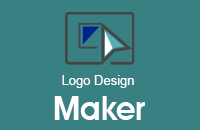The Three Elements to a Solid Logo Design Plan
May 24th, 2013
By: Deborah Sweeney, CEO of MyCorporation.com
Nearly every small business owner knows how to plan – one of the first steps towards starting your own business is drafting a business plan. But few actually use that skill for anything beyond organizing their workday, or writing a proposal. Jobs like designing a logo really do benefit when the organic, creative process is focused with a plan. But since this is handled a little bit differently than that of a traditional business plan, what elements should be incorporated into a design plan?
1. Versatility
A good logo has to be versatile – it will adorn nearly every piece of your company’s property, from your office, to your website, to your business cards. A well-designed logo can be used in a variety of mediums, and will look good no matter where it appears. A flashy, complex 3-D logo, for example, might look great on a webpage, but it could fall flat when printed out on cardstock. Simplicity leads to versatility, so try and keep the design nice and clean. And make sure that you also account for the color that you eventually use; while bright, neon colors can catch the eye, a darker, bolder color will stand out more in advertising.
2. Consistency
Are there any particular colors that you tend to use, either in your business or on your website? Even if you just started your business, the color schemes that you currently use will define your early trade dress, which is one of the primary ways your customers will be differentiate your product or company from your competitors. Incorporating whatever color scheme you currently use into your logo will both further the impact of your trade dress and make it easier to incorporate your logo into other aspects of your business, like your website or your office.
3. Protection
A good design plan isn’t worth much if you don’t plan on protecting your logo! Every business, from the tiny little mom and pop shop on Main Street to big, online corporations, can fall subject to intellectual property infringement. You will, undoubtedly, put a lot of effort into designing the perfect logo, and then spend years building trust and respect in your brand. Unfortunately there are plenty of less-than-scrupulous business owners who would have no problem profiting from your hard work by copying your logo. So before you start using your logo in earnest, file an application with the USPTO and make sure you protect your property with a trademark.
Designing a logo is a very fun, rewarding process, but without a set plan you can soon find yourself wrestling with a confusing, jumbled design. You probably have some idea of what kind of logo you’d like to have, so sketch it out, figure out a good, consistent color scheme, and try to keep it as simple as possible. As the designers of LogoBee aptly pointed out in one of their own posts, an overly complex design is no match for a strong, simple, vector-based logo. Finally, when you’ve finished creating the perfect logo, make sure to trademark it and begin protecting your brand.
About the Author:
Deborah Sweeney is the CEO of MyCorporation.com. MyCorporation is a leader in online legal filing services for entrepreneurs and businesses, providing start-up bundles that include corporation and LLC formation, registered agent, DBA, and trademark & copyright filing services. MyCorporation does all the work, making the business formation and maintenance quick and painless, so business owners can focus on what they do best. Follow her on Google+ and on Twitter @deborahsweeney and @mycorporation.





